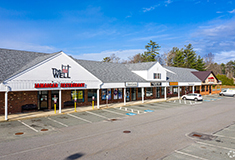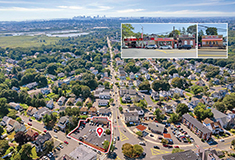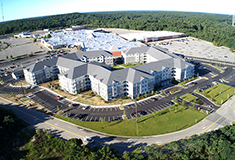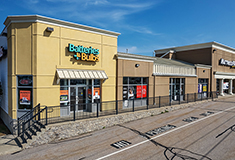News: Retail
Posted: January 24, 2013
Retail defeasance activity increases, while commercial real estate liquidity improves
Over the past year, real estate conditions, particularly in the lending market, continue to improve. As the lending markets continue to thaw, retail real estate investors are seeing signs of recovery. Property values in stronger markets continue to rise, and more investors are looking to secondary markets for higher yields.
These trends drive defeasance transactions in CMBS loans, since defeasance activity increases when commercial real estate liquidity improves. Defeasance is the process through which a borrower is released from the obligations associated with its debt through the purchase of a portfolio of high quality bonds, typically U.S. Treasuries. This portfolio serves as replacement collateral to secure the debt and generates the cash flows required to meet the future obligations of the loan. By far the largest potential cost of defeasance is the price of the replacement collateral over the outstanding principal balance of the loan, often referred to as the "defeasance premium."
The defeasance process allows a borrower to get released from a CMBS loan when the borrower is either selling the property or refinancing the loan. The process is typically coordinated by a defeasance consultant that coordinates with the various parties such as the servicer, servicer's counsel, verification accountant, securities broker/dealer, securities custodian, rating agencies, title company, and the successor borrower. The process is complex and often times the parties have competing interests.
According to Bloomberg, approximately 427 loans totaling $4.2 billion in CMBS loans were defeased in 2012 which is also comparable to 2011's volume. Of that, approximately 124 loans (29%) totaling approximately $1 billion were retail property types. Drilling down further in the retail data, 53 loans were anchored retail and 71 loans were un-anchored. Further, there were a total of 21 loans (17% of retail loans) located in the northeast totaling $326 million. The average DSCR for the northeast retail properties was approximately 1.6x, and the average debt yield was approximately 15%.
Over the past few years retail property defeasances have represented close to 30% of total commercial defeasance activity. Approximately half of those defeasances were driven by loan refinancings, while the other half were driven by property sale transactions. The average northeast retail property defeasance in 2012 involved a $15 million loan with a 5.9% interest rate and approximately 2 years to maturity.
On a recent defeasance transaction we handled, the owner of a portfolio of 10 CVS properties absorbed close to a 20% defeasance premium with approximately 6 years remaining on the original loans. The properties were sold to a REIT, where the deal met their investment profile and still made economic sense to pay the steep premium.
Mike Schoenstein is the president of Waterstone Defeasance, LLC, Charlotte, N.C.
Tags:
Retail
MORE FROM Retail
Retail
McEvoy of Conrad Group facilitates $9.5m sale of Sterling Plaza
Randolph, MA Sterling Trust has sold its Sterling Plaza neighborhood retail site located at 45 Mazzeo Dr. to The Shops at Randolph, LLC. The property is home to several restaurants, including the West End Grill, The Well, Outback Steakhouse and It’s Game Time Sportsbar.








.png)